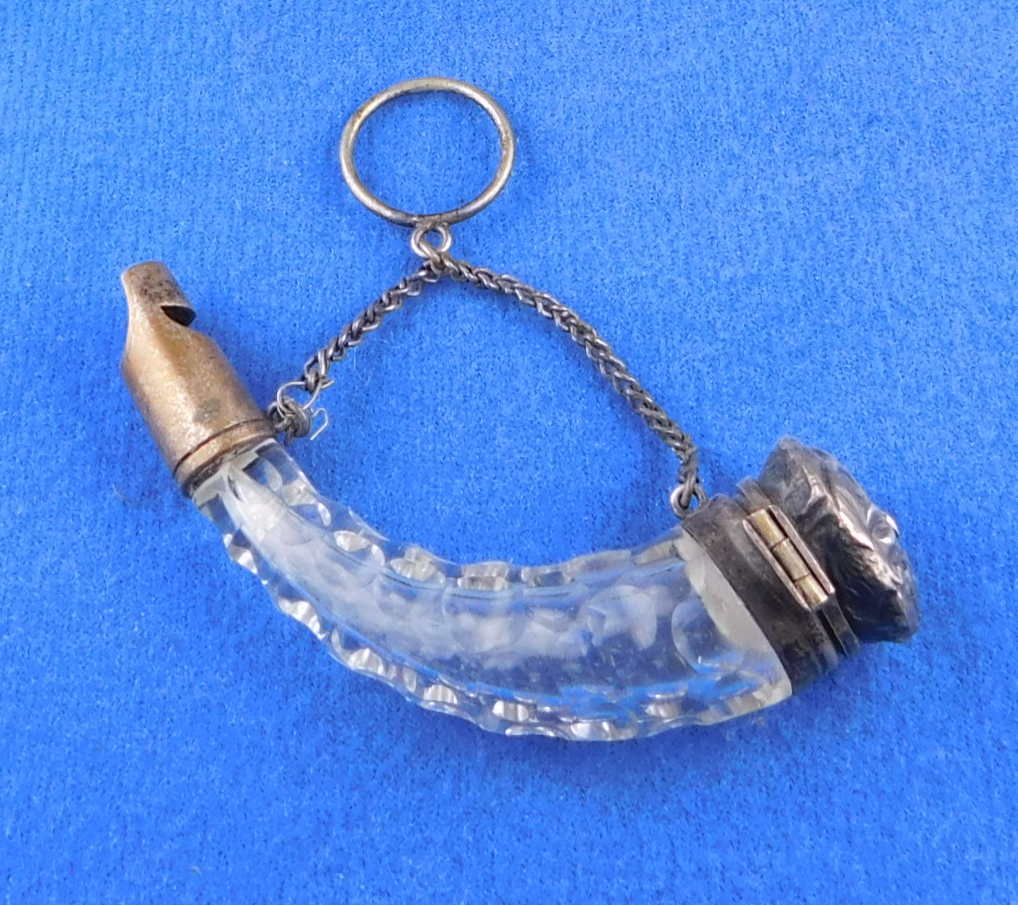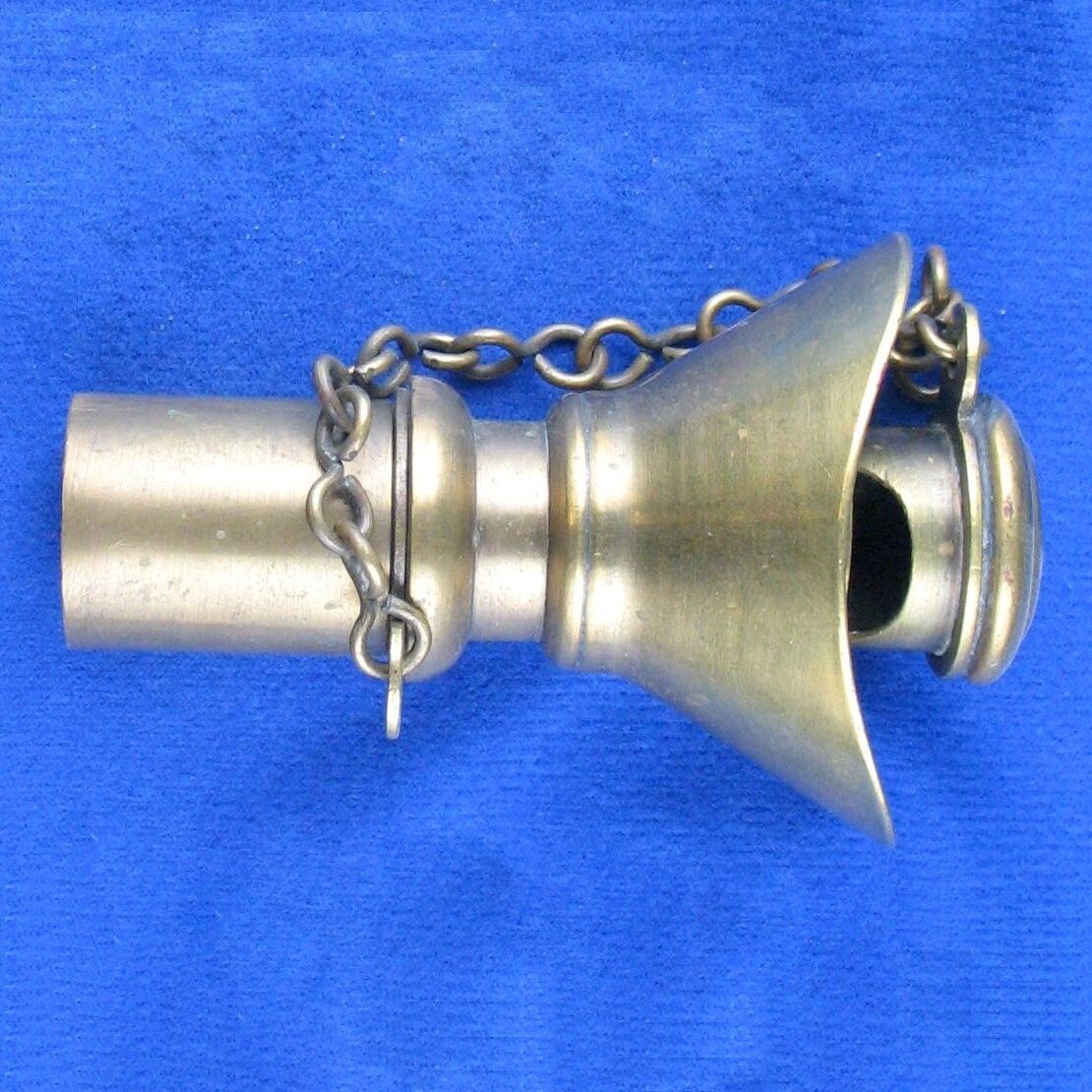Spotlight > Whistle Categories > Round > 098
WHISTORY:
In his 1870 catalog , Thomas Yates displays a round whistle design he called the ‘watchman’s’ whistle ( for railway ) and he made them with the ability to be unscrewed into two pieces for cleaning. It has a tall pillar like top. There is a seam down the middle in the back of the body. Although it was advertised in the 1870 catalog, it was likely was being been manufactured prior, dating it to the 1860s . It is found in the ‘best German silver’ ( i.e. nickel silver) section of his catalog, model number 804.
Unlike later models it did not have a stop hole for varying the sound. However a small round stone pea that was inserted would be able to cause a trilling sound. We have only found one TY stamped whistle with a pea inside. All other rounds have lacked a pea for one reason or another.
TY for Thomas Yates may or may not be stamped, usually not.
Joseph Hudson picked up this design perhaps 25 years later and utilized it for railway/military/general use. It is not known when Hudson started manufacturing them. It appears that two major manufacturers, possibly six total used this design. However with the longevity with which it was used, there may be more or less manufacturers involved that come to light.
Presented here are findings over a course of ten years of collecting and studying. As more are found and added we hope for ever more clarity. This design appears to have spanned close to 50 years of production, disappearing between the 1910 Hudson catalog and the 1935 Hudson catalog, as many round whistle models did by that time. Notably, no Hudson 1909 patented 553 interlocking teeth have been seen on this model.
Model 804 in the 1870 Yates catalog — No stop holes
Model 040 in the 1910 Hudson catalog, double note call — All have stop holes
Model 409 Gaunt circa 1890 ( ?? ) catalog page – stop holes ( made by Hudson ?? )
The following pictures are arranged by Yates as the earliest known, then to a couple of ‘transitional’ models, progressively on to later Hudson models. Hudson models may have been manufactured as early the 1890s, which leaves Yates trailing off perhaps as early as the 1880s, leaving a 10 year gap ??
Perhaps Hudson’s order book that is still in existence, could answer some of these questions.
WHISTLE ARCHEOLOGY:
Let’s start with the Yates model 804 stamped with TY. The second whistle is stamped with what looks to be the Greek letters – O P L
OPL —
Omicron
Phi
Lambda
These two are 69 mm and 70 mm. The windows are matching as well as the top cap rims
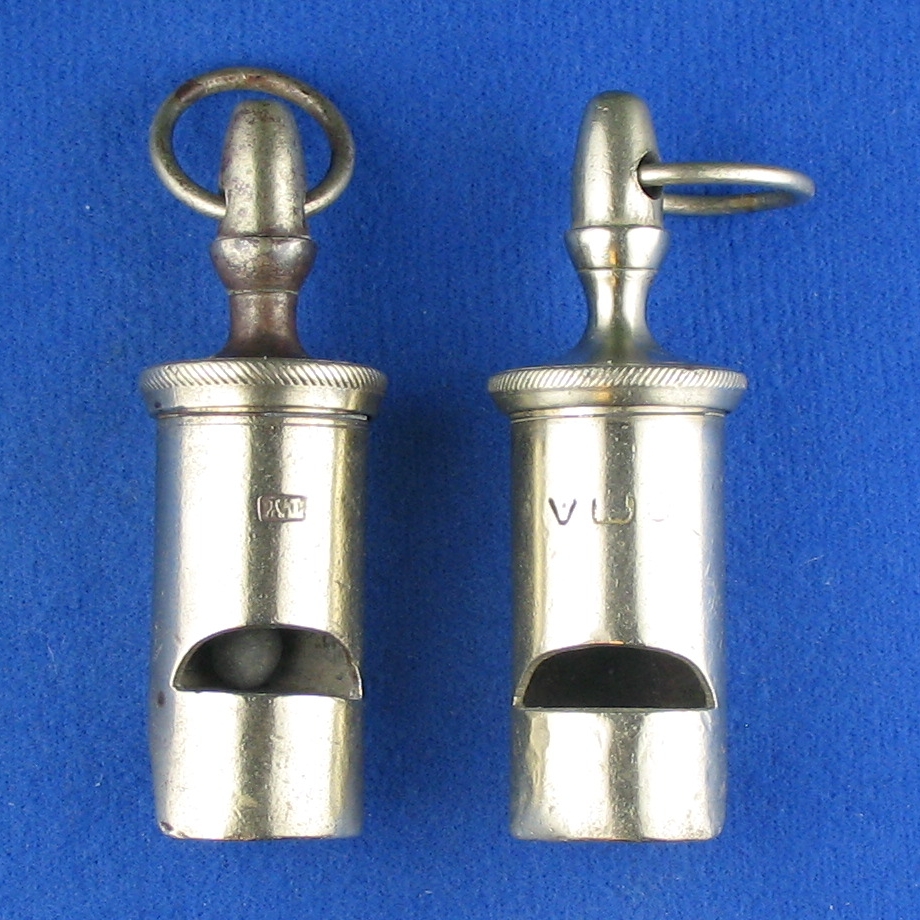
Comparatively placed is a possible Yates that is longer at 70 mm. We note the smooth finished top cap rim . The neck is slightly longer. The mouth piece fipple matches well. However the window is much taller and wider. Also the Greek letters would have to be now facing the opposite direction to be O P D
Omicron
Phi
Delta
It would appear to be a variation of a Yates, but is not conclusive. Here we have another possible manufacturer, note the window is much taller and the sides of the window wider. Yates did not typically use this shape window, but Hudson, DeCourcy and Ward did ( although Wards were a bit more rounded sideways ).
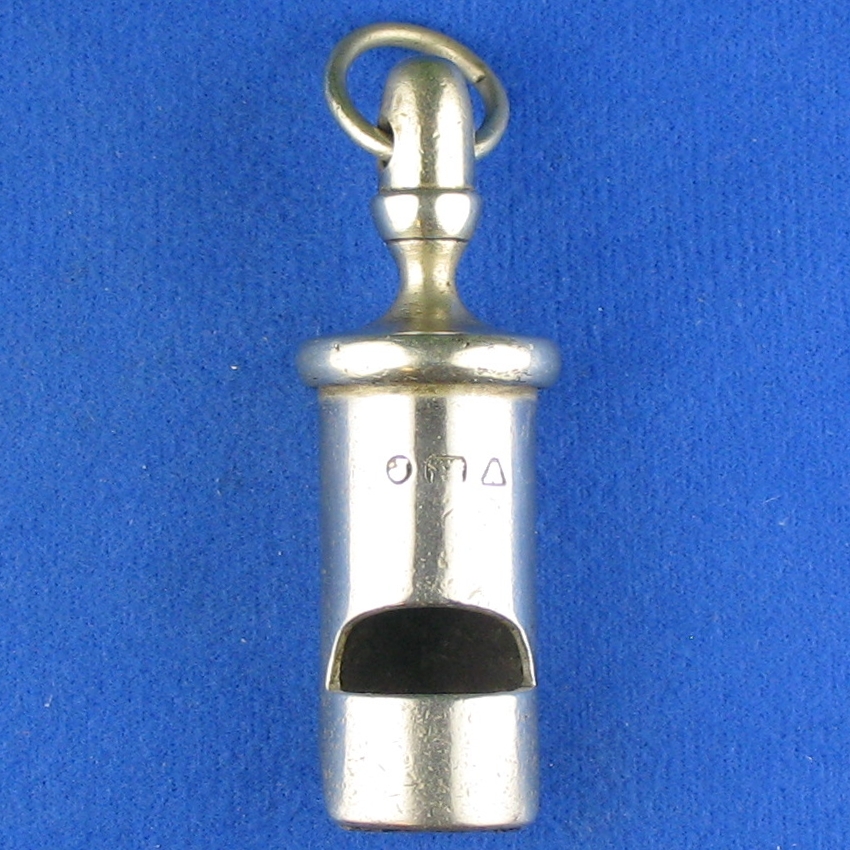
Next is probably Yates and with a stop hole. It would be the first stop hole model if so. Possibly it is a Hudson, however the stop hole is lower in the body than typical, as Hudson usually placed his close to the top cap. The window matches Yates best.
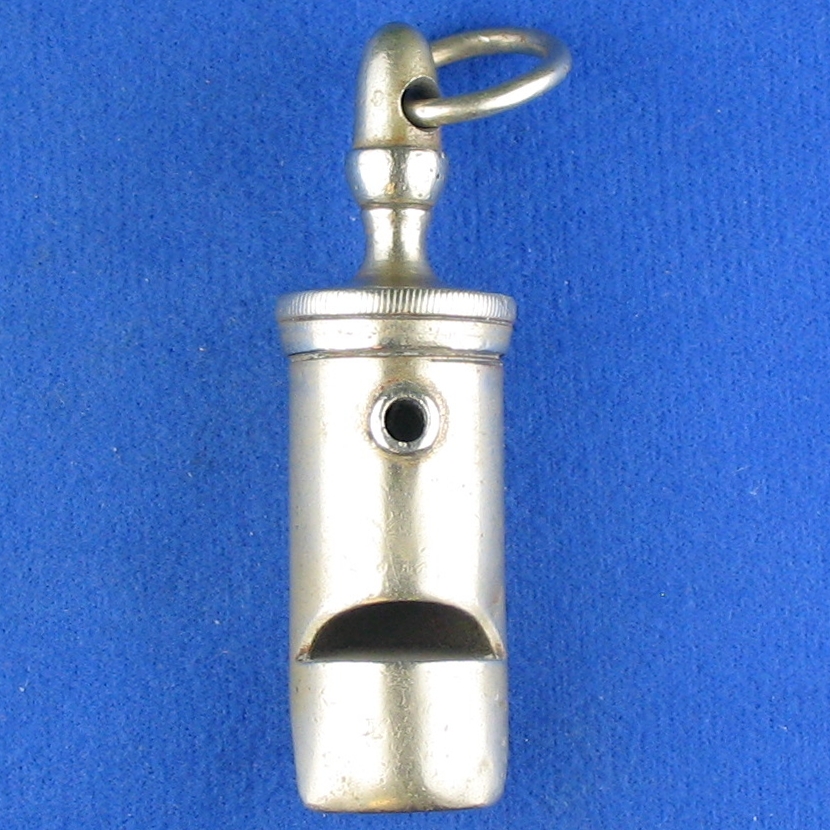
All four of these whistles unscrew at the top cap. The stop hole is lower than the Hudson’s. The top cap rim is thin as in Yates. It is the longest at 72 mm, longest of all shown.
The stop hole protrudes inside by 3 mm. The window matches Yates very closely, but the underside is thin compared to a very thick fipple on the early Yates. It appears to be a later Yates, but is not conclusive.
In moving on to the group picture, Hudson used a shallow half round window opening primarily. This is unusual in that Hudson typically used a wider window such as seen in the whistle 4th from the left. This possibly could be a DeCourcy trait, who also used the wider window opening or possibly Gaunt. The fipple is higher quality, with all the Hudson’s being a thin flat edge tube. The fipple inside is more like his. In fact this one whistle stands out amongst the others by Hudson in the group picture.
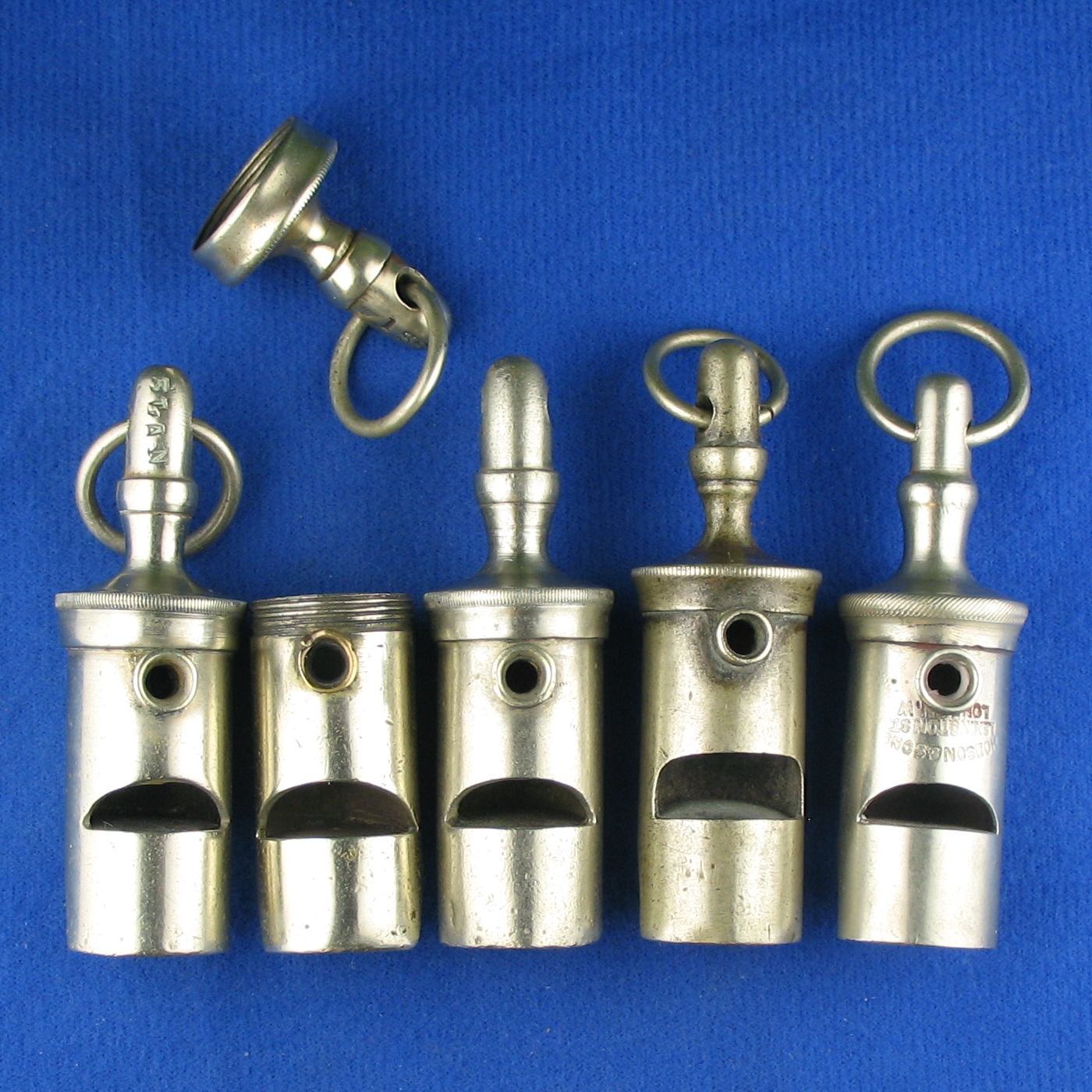
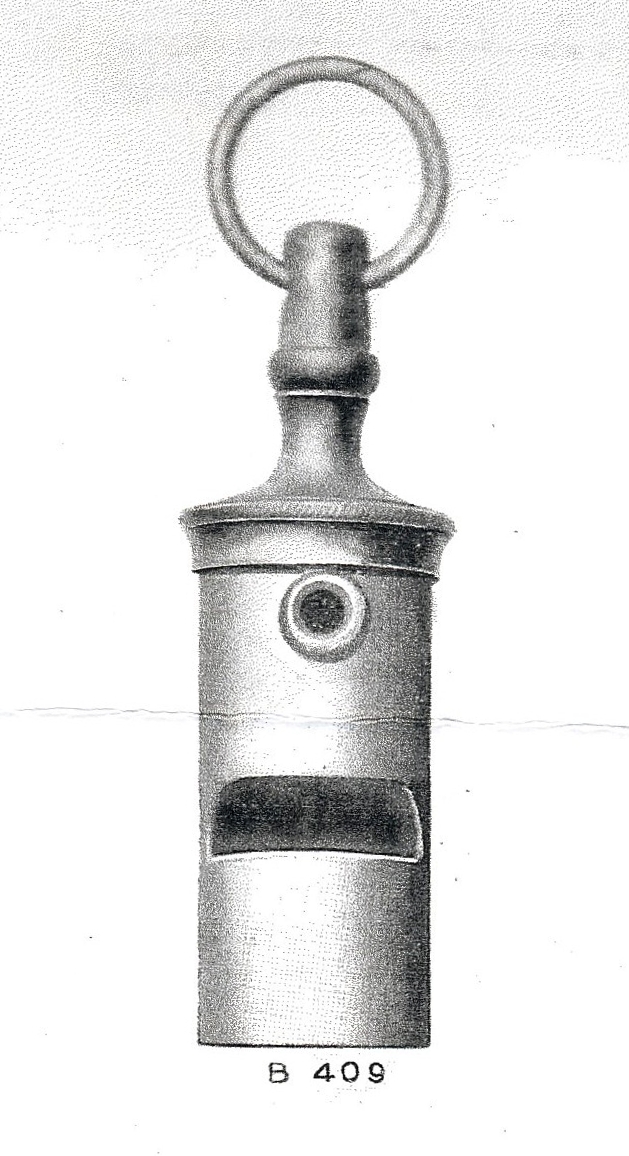
Gaunt catalog picture
Military marks are stamped on the pillar top. The second from the left unscrews and is also nickel silver.
Later ( circa 1900 to 1910 ) a model stamped with a retailer dating back to 1850 ( i.e. Hobson and Sons Lexington London W. ) would be distributed made of a lesser quality nickel plated brass.
Sampson Mordan produced silver Watchman’s whistles with hallmarks.
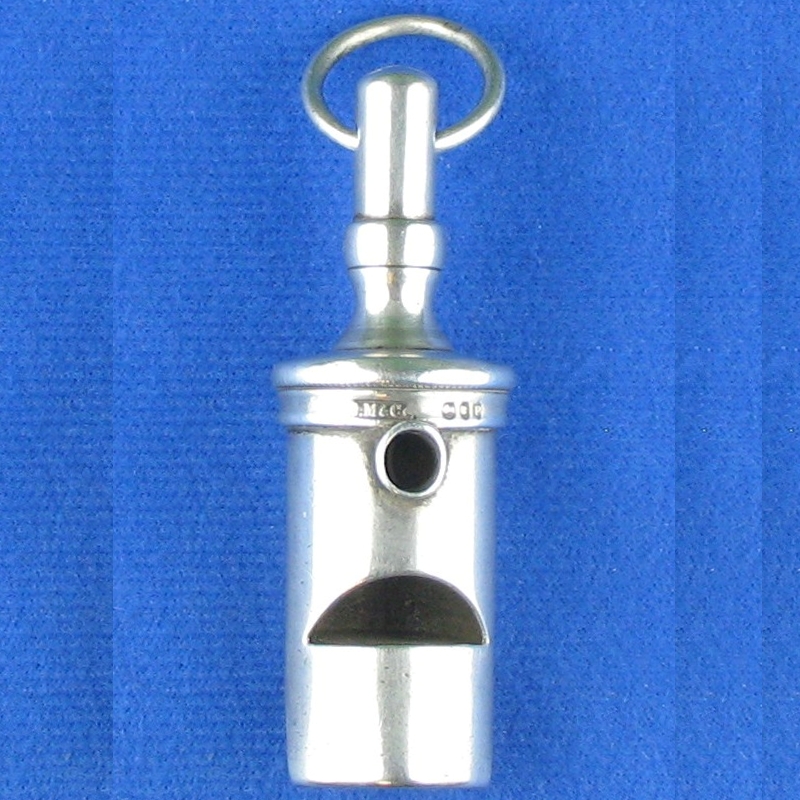
In a brief review, a closer look at the top cap rims and upper necks.
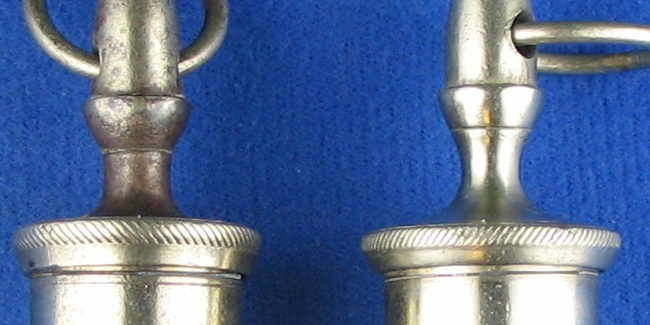
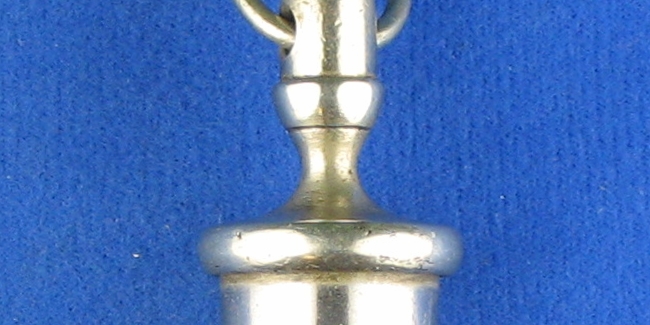
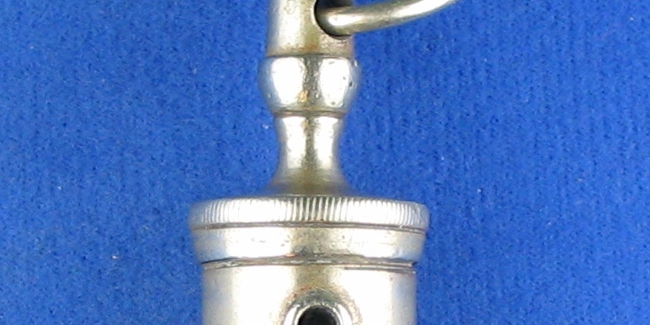

Conclusions ??
Yates designed the ‘watchman’ whistle and it dates back to the 1860s as it is grouped into the 1870 catalog with over a hundred whistles being manufactured already. Hudson followed this design with very few modifications. J.R.Gaunt, Sampson Mordan, possibly DeCourcy, Ward and Dowler manufactured the same model.
Both Yates and Hudson had models that unscrewed, but typically it was Yates. Stop holes were used by Hudson, but Yates may have started at the end of his production years.
Yates 1870 catalog
Hudson 1910 catalog
Hudson 1935 catalog
Gaunt circa 1900 catalog
TWG
Posted March 5, 2019
